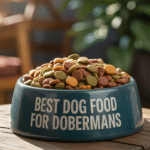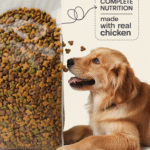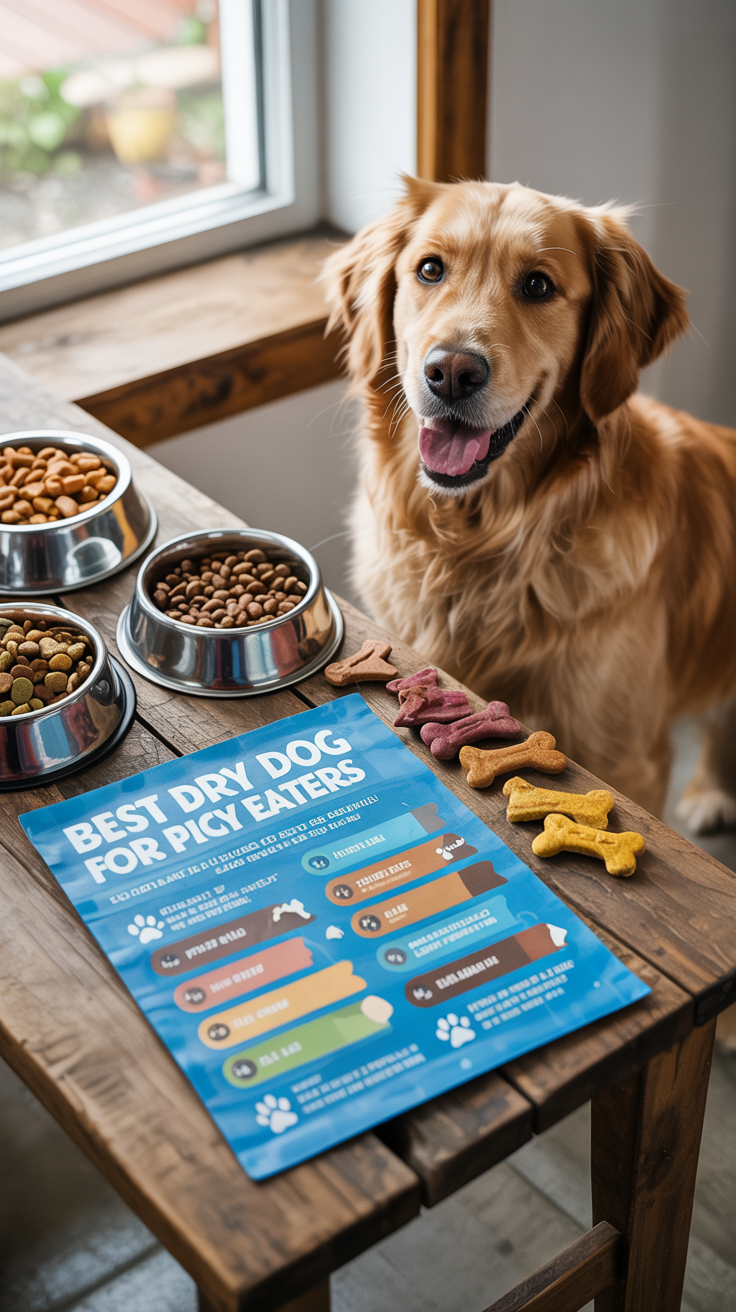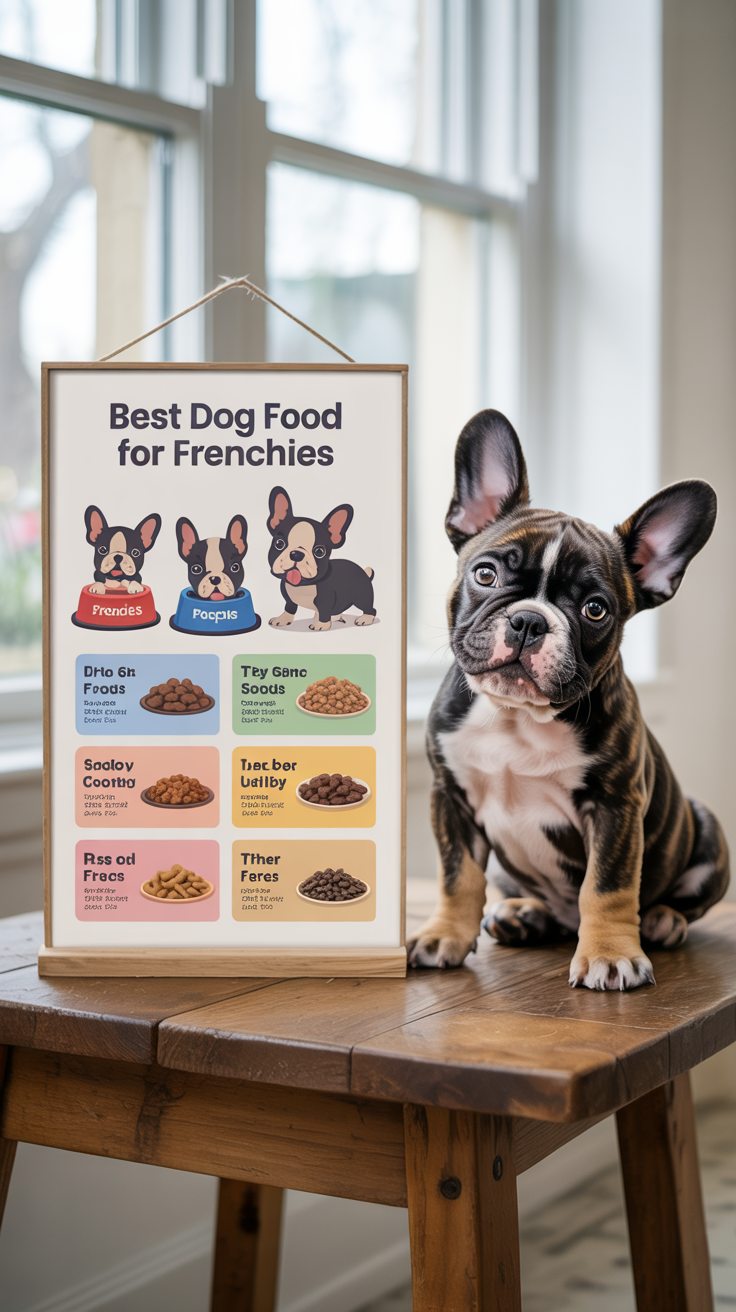As a pet owner, you often wonder about the best foods to share with your furry friend. This question arises for many dog lovers when it comes to the juicy and delicious cantaloupe. are there benefits or risks to sharing this fruit with your canine companion? Let’s explore the health benefits and potential risks of letting your dog eat cantaloupe.
Health Benefits of Cantaloupe for Dogs
Cantaloupe is not just a sweet treat; it offers several health benefits for your dog. Here are some noteworthy advantages:
- Hydration: Cantaloupe has a high water content, which can help keep your dog hydrated, especially during hot weather.
- Vitamins and Nutrients: This fruit is rich in vitamins A and C, which are important for your dog’s immune system, eye health, and skin.
- Low in Calories: Cantaloupe is low in calories, making it a guilt-free snack for dogs who need to watch their weight.
- Fiber: The fiber in cantaloupe can aid in digestion, helping to prevent constipation.
- Antioxidants: These help fight free radicals, potentially reducing the risk of chronic diseases in dogs.
Feeding Cantaloupe: How to Do It Safely
If you decide to give your dog cantaloupe, it’s important to prepare it correctly. Here’s how:
- Wash the Fruit: Always wash the cantaloupe thoroughly to remove any pesticides or harmful chemicals.
- Remove Seeds: Before giving your dog the fruit, be sure to remove all seeds, as they can be a choking hazard.
- Cut into Small Pieces: Cut the cantaloupe into small, manageable pieces for your dog to prevent choking.
- Moderation is Key: Introduce cantaloupe gradually into your dog’s diet to see how they react.
Potential Risks of Cantaloupe for Dogs
While there are health benefits to sharing cantaloupe with your dog, there are also potential risks to be aware of:
- Allergic Reactions: Some dogs may be allergic to cantaloupe, showing symptoms such as itching or swelling.
- Digestive Issues: Overfeeding cantaloupe can lead to digestive upset, including diarrhea or vomiting.
- High Sugar Content: Although natural sugars in fruit are better than processed sugars, cantaloupe still contains sugars that may not be suitable for diabetic dogs.
- Gastrointestinal Blockage: If your dog swallows large pieces without chewing, it might lead to blockages.
What to Watch For
Whenever you introduce a new food into your dog’s diet, it’s essential to monitor them for any signs of distress. Look for:
- Vomiting
- Diarrhea
- Excessive thirst
- Behavioral changes
If you notice any of these symptoms, consult your veterinarian immediately.
Alternatives to Cantaloupe
If you find that cantaloupe is not suitable for your dog, consider alternative fruits that are safe and healthy for dogs:
| Fruit | Benefits |
|---|---|
| Blueberries | Rich in antioxidants and fiber. |
| Apples | High in vitamins A and C; be sure to remove seeds. |
| Watermelon | High in water content; refreshing in summer. |
| Bananas | Good source of potassium; feed in moderation due to sugar. |
Always ensure you are aware of which fruits are safe for dogs. You can find more detailed information on [American Kennel Club](https://www.akc.org) and [PetMD](https://www.petmd.com) to ensure your dog stays healthy while enjoying snacks.
Cantaloupe can be a delightful treat for your dog when fed correctly. Remember to introduce it slowly and in moderation while monitoring for any reactions. With mindful feeding, your dog can enjoy the refreshing taste of cantaloupe alongside its numerous health benefits.
Nutritional Value of Cantaloupe for Dogs
Cantaloupe is a delicious and refreshing fruit that many people enjoy, but you might wonder if your four-legged friend can share in this treat. Let’s dive into the nutritional value of cantaloupe for dogs to help you make informed decisions about your pet’s diet.
Nutritional Breakdown of Cantaloupe
Cantaloupe is low in calories and packed with vitamins and minerals. Here’s a quick overview of the essential nutrients found in cantaloupe:
| Nutrient | Amount per 100g |
|---|---|
| Calories | 34 |
| Water | 90% |
| Protein | 0.84g |
| Fat | 0.19g |
| Carbohydrates | 8.16g |
| Fiber | 0.9g |
| Vitamin A | 1690 IU |
| Vitamin C | 36.7mg |
| Potassium | 267mg |
As you can see, cantaloupe is an excellent choice because it is rich in water and low in calories. This makes it a great hydrating snack, especially in hot weather.
Benefits of Cantaloupe for Dogs
Feeding your dog cantaloupe has several potential benefits. Here are some key advantages:
- Hydration: Due to its high water content, cantaloupe helps to keep your dog hydrated.
- Low Calorie: It’s a guilt-free snack option for overweight dogs or those needing to manage their weight.
- Vitamins and Minerals: Cantaloupe provides essential vitamins A and C, which can support your dog’s immune system and overall health.
- Antioxidants: The antioxidants in cantaloupe may help reduce inflammation and support cellular health.
How to Feed Cantaloupe to Your Dog
Before introducing cantaloupe into your dog’s diet, consider the following tips:
- Portion Control: Only feed small pieces. Depending on the size of your dog, a few cubes or slices may be sufficient.
- Seed Removal: Always remove seeds and skin to prevent choking hazards.
- Moderation: Treat cantaloupe as an occasional snack, not a regular meal replacement.
It’s always best to introduce any new food gradually to monitor for any adverse reactions.
As much as cantaloupe offers numerous benefits, not every dog may enjoy or tolerate the fruit. Watch your pup after introducing cantaloupe and look for any signs of digestive upset. If you notice vomiting or diarrhea, discontinue feeding it and consult your veterinarian.
Potential Risks and Considerations
Cantaloupe is safe for most dogs, but some considerations must be kept in mind:
- Allergies: While rare, some dogs may have an allergic reaction to fruits.
- Diabetes: Because cantaloupe contains natural sugars, diabetic dogs should avoid sugary fruits.
- Pesticides: Make sure to wash the fruit thoroughly to remove any pesticides.
As you incorporate cantaloupe into your dog’s diet, balance is key. Like any treat, moderation is essential in keeping your dog’s diet healthy.
For more information on safe fruits for dogs and pet nutrition, visit American Kennel Club or Oregon State University.
Cantaloupe can be a delightful addition to your dog’s snack options if served safely and in moderation. Just keep an eye out for how your canine friend responds, so you can ensure a healthy and tasty treat!
Tips for Introducing Cantaloupe into Your Dog’s Diet
Cantaloupe is a sweet and refreshing fruit that many humans enjoy, and you might be wondering if your furry friend can join in on the fun. The good news is that dogs can eat cantaloupe in moderation! However, introducing any new food into your dog’s diet should be done carefully. Here are some tips to help you introduce cantaloupe safely and successfully into your dog’s diet.
Start with Small Portions
When introducing cantaloupe to your dog, begin with a small piece. This allows you to observe how your dog reacts to the fruit. Some dogs might love the sweet taste, while others may not be as interested. Starting small helps prevent any digestive issues that may arise from sudden dietary changes.
Remove Seeds and Rind
Before giving your dog any cantaloupe, it’s essential to prepare it properly. Ensure you:
- Remove all seeds, as they can pose a choking hazard.
- Cut away the rind, as it can be tough for dogs to digest.
- Offer only the soft, orange flesh of the fruit.
Watch for Allergies or Sensitivities
As with any new food, you should be watchful for any allergic reactions. Signs of food allergies in dogs can include:
- Itching or skin irritation
- Upset stomach or diarrhea
- Vomiting
If you notice any of these symptoms after your dog eats cantaloupe, discontinue feeding it immediately and consult your veterinarian.
Monitor Their Reaction
Give your dog a few hours to digest cantaloupe and watch for any changes in behavior or health. If they seem fine and enjoy the treat, you can gradually increase the portion size over time. Make sure to keep it as an occasional snack rather than a daily staple.
Limit the Amount
While cantaloupe is healthy, too much fruit can cause stomach upset. It’s best to limit your dog’s cantaloupe intake to a few small bites once or twice a week. Keeping it in moderation ensures that your dog benefits from the nutrients without overloading their system with sugar.
Health Benefits of Cantaloupe for Dogs
Cantaloupe isn’t just a tasty treat for your pup; it also offers several health benefits, including:
- Hydration: Cantaloupe is made up of about 90% water, which helps keep your dog hydrated.
- Low in Calories: This fruit is low-calorie, making it a guilt-free snack.
- Vitamins and Minerals: Cantaloupe is rich in vitamins A and C, which are beneficial for your dog’s immune system and overall health.
Alternative Ways to Serve Cantaloupe
If you want to spice things up, consider different ways to serve cantaloupe to your dog:
- Freeze small pieces for a cool summer treat.
- Blend cantaloupe into a smoothie and mix it with their regular food.
- Incorporate cantaloupe into homemade dog treats for a burst of flavor.
Consult Your Vet
If you are ever in doubt about what foods are safe for your dog, it’s always a good practice to consult your veterinarian. They can give you personalized advice based on your dog’s health, age, and dietary needs. You can find more information and resources on pet nutrition from trusted sites like ASPCA and AKC.
With proper introduction and moderation, cantaloupe can be a delightful added treat for your dog. Always prioritize your dog’s health and well-being when experimenting with new foods. Happy snacking!
Fun Ways to Serve Cantaloupe to Your Dog
If you’re looking for a healthy and refreshing treat to share with your furry friend, cantaloupe is a fantastic option. This juicy fruit is not only delicious but also packed with nutrients that can benefit your dog. Here are some fun and creative ways to serve cantaloupe to your dog!
Fresh Cantaloupe Cubes
One of the simplest ways to serve cantaloupe is to cut it into small cubes. Here’s how you can do it:
- Choose a ripe cantaloupe that feels slightly soft to the touch.
- Cut the cantaloupe in half and scoop out the seeds.
- Slice the fruit into small cubes, ensuring they are easy for your dog to chew.
Fresh cantaloupe cubes make for a tasty snack on hot days, keeping your dog hydrated while providing essential vitamins.
Frozen Cantaloupe Treats
On a hot summer day, your dog will love frozen cantaloupe treats. Follow these simple steps:
- Cube a ripe cantaloupe as mentioned above.
- Spread the cantaloupe cubes on a baking sheet lined with parchment paper.
- Freeze the cubes for a few hours, until solid.
- Once frozen, you can store them in a zip-lock bag for easy access.
Your dog can enjoy these frozen treats during playtime or as a special reward!
Cantaloupe Smoothie
A cantaloupe smoothie is a creamy and nutritious option for your dog. Here’s how to make one:
- Take a cup of ripe cantaloupe cubes.
- Add half a banana and a cup of plain yogurt or unsweetened almond milk.
- Blend until smooth and creamy.
- Serve in a bowl or as a fun-filled popsicle by freezing it in an ice cube tray.
This smoothie is not only a refreshing drink but also a great way to sneak in some extra nutrients.
Cantaloupe & Peanut Butter Bites
Combining cantaloupe with peanut butter creates a delicious snack your dog will adore:
- Cut cantaloupe into small, bite-sized pieces.
- Spread a small amount of natural peanut butter on each piece.
- Optionally, you can freeze these bites for a cool treat.
Just make sure the peanut butter doesn’t contain xylitol, which is harmful to dogs! This combination is sure to make your dog wag their tail in delight.
Dog-Friendly Cantaloupe Sorbet
Make a fun cantaloupe sorbet by following these steps:
- Puree fresh cantaloupe in a blender.
- Add a dash of honey, if desired (keep in mind that honey should be given in moderation).
- Pour the mixture into ice cube trays and freeze.
- Let your dog enjoy this sorbet during play or as a reward for a good behavior!
This refreshing dessert is perfect for those sunny days when your dog wants something cool.
Cantaloupe Dog Treat Recipe
If you enjoy baking, why not try making dog treats infused with cantaloupe? Here’s a quick recipe:
- 1 cup whole wheat flour
- 1/2 cup pureed cantaloupe
- 1/4 cup rolled oats
- 1 egg
Combine all ingredients in a bowl, form into small shapes, and bake at 350°F for 20-25 minutes. Your pooch will be ecstatic over these homemade goodies!
For more information on dog-friendly fruits and DIY dog treats, consider checking out AKC’s guide on dog nutrition and homemade dog treats ideas. You’ll find fantastic resources and recipes to keep your dog happy and healthy!
Remember to always introduce new foods into your dog’s diet gradually and watch for any adverse reactions. Cantaloupe is a wonderful treat, providing hydration and vitamins, so feel free to get creative with how you serve it to your beloved canine companion.
Alternatives to Cantaloupe: Safe Fruits for Dogs
When you want to treat your furry friend to something special, fruits can be a delightful option. While cantaloupe is often discussed, you might be wondering about other fruits that are safe and healthy for dogs. Knowing the alternatives can ensure your pup enjoys a delicious snack without any adverse effects.
Fruits are generally a great choice because they are full of vitamins, minerals, and energy. Here are some safe fruit alternatives to consider for your dog:
Blueberries
Blueberries are little powerhouse fruits that are packed with antioxidants. They can help improve your dog’s immune system, and many dogs love their sweet and tangy flavor. You can serve them fresh, or even freeze them for a refreshing treat on hot days.
Watermelon
Watermelon is another excellent choice during the warmer months. It is mostly made of water, making it a hydrating treat for dogs. Make sure to remove the seeds and rind before offering it to your pup, as these parts could cause digestive issues. Cut it into small, manageable pieces for easy consumption.
Apples
Apples are a great source of vitamins A and C. They also provide fiber, which can aid in digestion. Be sure to remove the seeds and core, as apple seeds contain cyanide, which is toxic in larger quantities. Slicing apples into bite-sized pieces can make them an enjoyable treat for your dog.
Bananas
Bananas are high in potassium, vitamins, and are very low in cholesterol. Most dogs love their sweet taste, making them a popular choice for snacks. They can be given whole, but for small dogs, it’s better to slice them into smaller portions to avoid choking hazards.
Pineapple
Pineapple is a tropical treat that’s packed with nutrients. It’s full of vitamins, minerals, and digestive enzymes that can be good for your pup. Just like other fruits, the core and the hard skin should be removed. You can give this sweet fruit in small, manageable chunks.
Peaches
Fresh peaches can be a juicy snack for dogs, but be cautious. Always remove the pit before sharing with your furry friend. The pit can be a choking hazard and may contain cyanide as well. Fresh, sliced peaches can provide lots of vitamins and hydration.
Strawberries
Strawberries are not just delicious; they also contain high levels of fiber and vitamin C. They also have an enzyme that can help whiten your dog’s teeth! You can serve them whole or slice them up to create a tempting treat.
Raspberries
Raspberries are another berry option that dogs can enjoy. They are low in sugar and high in fiber. Plus, they are rich in antioxidants, which contribute to overall health. However, it’s best to offer them in moderation due to their natural sweetness and a small amount of xylitol, which could be harmful in large quantities.
When introducing any new fruit to your dog, it’s a good idea to start with small amounts to check for any adverse reactions. Not all dogs digest food the same way, so you will want to monitor your pet after they try a new fruit.
Fruits should only be a part of your dog’s diet and not the main course. Always balance their meals with high-quality pet food to ensure they are getting all their nutritional needs. For more information on safe fruits for dogs, check out AKC or visit Healthy Paws for detailed guides on pet diets.
There are numerous delicious, nutritious alternatives to cantaloupe that you can share with your dog. From blueberries to watermelon, these fruits not only add variety to your dog’s diet but also provide various health benefits. Always remember to prepare the fruits safely by removing seeds and cores, and enjoy treating your furry friend to these tasty snacks!
Conclusion
Cantaloupe can be a delightful and healthy treat for your furry friend when offered in moderation. The juicy fruit provides beneficial vitamins and hydration, making it a refreshing snack, especially during warm weather. However, it’s important to be mindful of the risks, such as allergies or digestive issues. Always introduce cantaloupe slowly into your dog’s diet to monitor their reaction.
When you serve cantaloupe, consider creative methods that will engage your dog, like frozen bites or blending it into a smoothie. Just remember to remove the seeds and rind to ensure their safety. Additionally, cantaloupe isn’t the only fruit that your dog can enjoy; alternatives like blueberries, apples, and bananas also provide nutritional benefits. Each of these fruits offers different vitamins and antioxidants that can support your dog’s overall health.
Before making any significant changes to your dog’s diet, it’s best to consult with your veterinarian, especially if your dog has specific health conditions. With the right approach, fruits like cantaloupe can add variety and excitement to your dog’s meals. Keep the focus on moderation and always watch for any adverse reactions. Treats should enhance your dog’s life, contributing to their joy and health—so have fun exploring safe and tasty options together!
















Leave a Reply